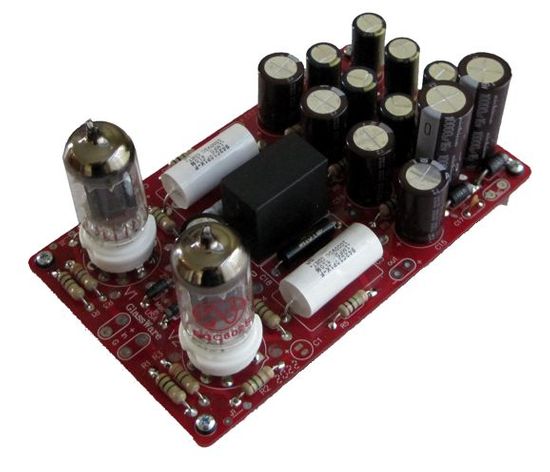 The Aikido amplifier delivers the sonic goods. It offers low distortion, low output impedance, a great PSRR figure, and feedback-free amplification. The secret to its superb performance—despite not using global feedback—lies in its internal symmetry, which balances imperfections with imperfections. As a result, the Aikido circuit works at least a magnitude better than the equivalent grounded-cathode amplifier. |
 Balanced signals can be converted to an unbalanced output signal. The BCF and Unbalancer perform this task well. The BCF receives a balanced input signal and converts it to an unbalanced output. It is a unity-gain buffer that offers a high input impedance, a low output impedance, low distortion, and great CMRR. The Unbalancer adds signal gain to the BCF. |
 The Constant-Current-Draw Amplifier (CCDA) is a compound circuit that holds a grounded-cathode amplifier directly cascaded into a cathode follower. So what; what’s so special about this obvious pairing? Its special status lies in the details. Each triode sees the same cathode to plate voltage and the same load resistance and same idle current draw. Each sees the same signal voltage swings. Both grounded-cathode amplifier and the cathode follower are in voltage phase, but not current phase. |
 The SRPP is about a simple as a compound tube circuit can get, holding only two triodes and only two key resistors, which goes a long, long, long way to explaining its immense popularity. But as we have seen, simple is not always easy to understand. Used as mini power amplifiers of a sort, amplifiers that can deliver big current and voltage swings into a low-impedance load, the SRPP and SRPP+ excel, as both circuits can deliver up to twice the idle current into a load, if designed correctly and offer a great PSRR figure (better than -20dB with a 300-ohm in this design example and much better with a 32-ohm load). |
 Each PCB holds two cathode-coupled line-stage amplifiers; thus, one board is all that is needed for stereo unbalanced use (or one board for one channel of balanced amplification). The Cathode-Coupled PCB makes building a standard-setting line stage amplifier a breeze. This assembled board with a chassis, volume control, selector switch, power transformer, and a fistful of RCA jacks is all that is needed. |





